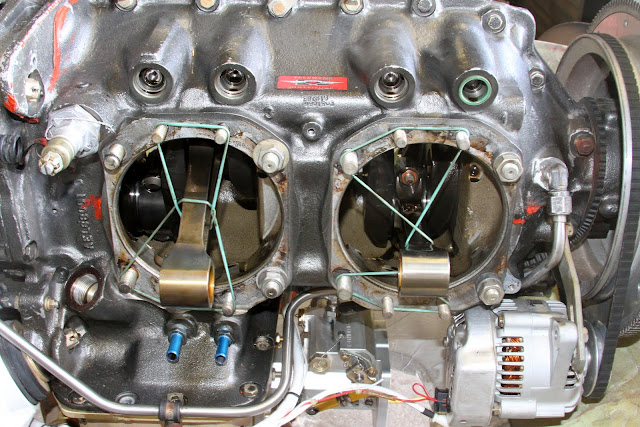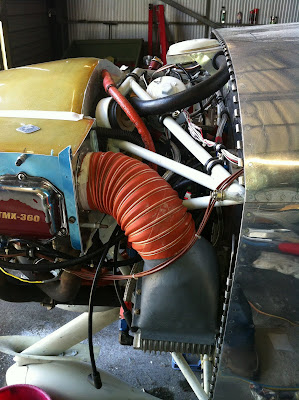I'm currently in the process of changing out my Group B ECI Cylinders (AD 2009-26-12).
Over the last 350 hours I have had issues with high oil temperature. I knew the engine had cam squirts but assumed no piston oil squirts. So imagine my surprise last week when I pulled the cylinders and the LAME commented that I had piston oil squirts.
I?m wondering if I should bite the bullet and remove these during the top overhaul? Has anyone done this and what was the effect on oil temps / CHTs? While I can see the advantages to reducing oil temperatures I don't want to just move the issue on to high CHTs.
A few other details about my installation:
The engine is a 180 HP Mattituck IO-360 with P-Mags. I have installed a Sam James Plenum.
I have tried many things to reduce temps including sealing baffles, fitting louvers, vernatherm testing, timing adjustments etc. Finally in desperation I installed a RV10 cooler and attached it to the firewall with a 4" SCAT hose.
All the work I have done to date has resulted in marginal oil temperature. I generally cruise 30F LOP and at that sort of power setting I see 180-200F oil temperatures. If I cruise ROP, the oil temperature rises to around 210-220F on an average day. On a really hot day (100F) I have seen oil hit 230F in the climb out.
CHTs have been reasonable - around 330-345F in LOP cruise. However, #4 runs about 30F hotter than the rest - no doubt due to the large volume of air being extracted from the baffling right behind the exhaust valve.
You can see what all the fuss is about below in the upper RHS of #1 cylinder.

A picture of my large cooler installation during assembly

Thanks for any help.
__________________
Richard Talbot
RV-7A
Sydney, Australia
Over the last 350 hours I have had issues with high oil temperature. I knew the engine had cam squirts but assumed no piston oil squirts. So imagine my surprise last week when I pulled the cylinders and the LAME commented that I had piston oil squirts.
I?m wondering if I should bite the bullet and remove these during the top overhaul? Has anyone done this and what was the effect on oil temps / CHTs? While I can see the advantages to reducing oil temperatures I don't want to just move the issue on to high CHTs.
A few other details about my installation:
The engine is a 180 HP Mattituck IO-360 with P-Mags. I have installed a Sam James Plenum.
I have tried many things to reduce temps including sealing baffles, fitting louvers, vernatherm testing, timing adjustments etc. Finally in desperation I installed a RV10 cooler and attached it to the firewall with a 4" SCAT hose.
All the work I have done to date has resulted in marginal oil temperature. I generally cruise 30F LOP and at that sort of power setting I see 180-200F oil temperatures. If I cruise ROP, the oil temperature rises to around 210-220F on an average day. On a really hot day (100F) I have seen oil hit 230F in the climb out.
CHTs have been reasonable - around 330-345F in LOP cruise. However, #4 runs about 30F hotter than the rest - no doubt due to the large volume of air being extracted from the baffling right behind the exhaust valve.
You can see what all the fuss is about below in the upper RHS of #1 cylinder.
A picture of my large cooler installation during assembly
Thanks for any help.
__________________
Richard Talbot
RV-7A
Sydney, Australia




